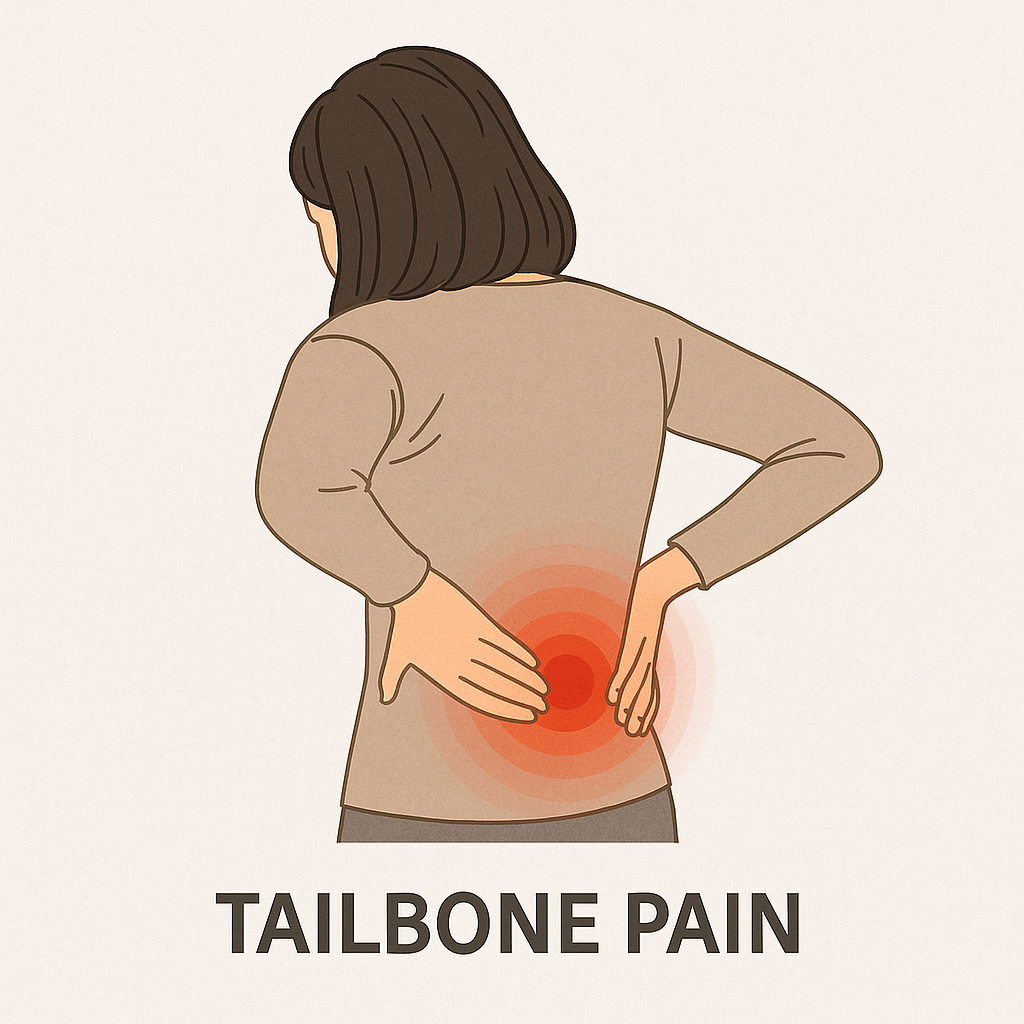
Tailbone pain, medically known as coccydynia, is an often-overlooked condition that can severely impact daily activities like sitting, standing, and even sleeping. This pain is felt in the coccyx—the small, triangular bone at the bottom of the spine. While modern medicine often treats tailbone pain with painkillers, cushions, or even surgery in severe cases, Ayurveda provides a holistic and natural approach to healing, targeting the root cause rather than just the symptoms.
In Ayurveda, health is a balance between the three doshas: Vata, Pitta, and Kapha. Tailbone pain is primarily seen as a Vata disorder. Vata governs movement in the body and is associated with air and space elements. When Vata becomes imbalanced—due to factors like prolonged sitting, injury, stress, or poor diet—it can lead to pain, dryness, and stiffness in the lower back and tailbone area.
The Ayurvedic approach focuses on restoring balance to the Vata dosha through diet, lifestyle changes, herbal treatments, external therapies, and yoga.
Ayurveda uses herbs to reduce inflammation, lubricate the joints, and ease pain. Some powerful herbs for tailbone pain include:
These herbs may be taken as tablets, decoctions, or powders, often in formulations like Yograj Guggulu, Dashmoolarishta, or Mahayograj Guggulu. Before going for ayurvedic treatment for tailbone pain, please consult an Ayurvedic doctor near you.
Daily or weekly massage with warm medicated oils helps calm Vata and improve circulation in the coccyx region. Oils commonly used include:
Massage should be gentle and focused on the lower back, hips, and tailbone. Regular abhyanga reduces stiffness, nourishes tissues, and supports nerve function. Get it done at a dedicated ayurveda and panchakarma clinic near you
Kati Basti is a localized therapy that involves retaining warm medicated oil over the lower back in a dough ring. This soothes the muscles and nerves around the tailbone and promotes deep tissue healing.
It is typically done in a series of sessions over several days or weeks, depending on the severity of the pain.
Basti is considered one of the most effective Panchakarma therapies for Vata-related disorders. In this treatment, medicated oils or decoctions are introduced into the colon through the rectum. It helps lubricate the intestines, remove toxins, and nourish the lower spine.
Types of basti beneficial for tailbone pain include:
Basti must be administered under the guidance of a qualified Ayurvedic doctor in a Panchakarma clinical setting.
Tailbone pain can be frustrating and debilitating, but Ayurveda offers a gentle yet powerful roadmap to healing. By addressing the underlying Vata imbalance through herbal remedies, detoxification, massage, yoga, and mindful living, you can not only relieve pain but also prevent it from returning.
If you’re suffering from chronic tailbone discomfort, consider consulting with a qualified Ayurvedic practitioner. With the right support, a pain-free, grounded, and vibrant life is entirely possible—naturally.
Copyright @jyotiayurclinic.com.